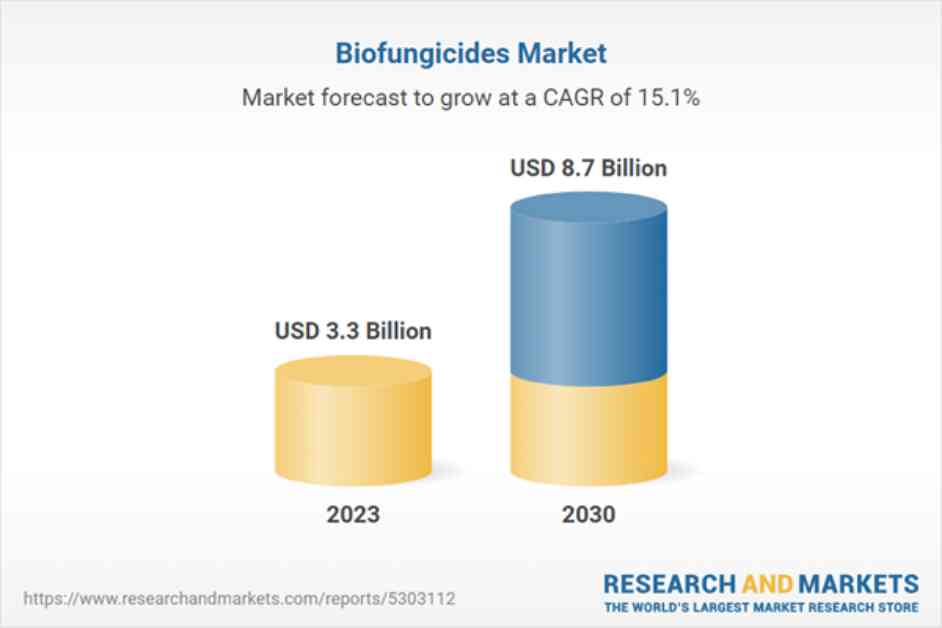The Biofungicides market is on the rise, with a projected value of $8.7 billion by 2030, showing a significant increase from $3.3 billion in 2023. This growth is primarily due to advancements in biological crop protection technology, leading to the development of environmentally friendly alternatives to chemical fungicides. Biofungicides, which are derived from natural sources like bacteria, fungi, and plant extracts, are becoming more popular as they offer a safer option for managing fungal diseases while minimizing harm to the environment.
One of the key drivers of this market growth is the increasing regulatory restrictions on chemical fungicides, pushing farmers to adopt biofungicides as a safer alternative. Additionally, the demand for organic and pesticide-free food products is rising, further boosting the adoption of biofungicides in agriculture. With advancements in microbial formulation and application technologies, biofungicides are becoming more effective and cost-efficient for farmers, leading to a shift from chemical to biological crop protection solutions.
Biofungicides are gaining traction in sustainable agriculture due to their ability to control fungal pathogens without harming beneficial organisms or the environment. As concerns over the negative impacts of chemical fungicides continue to grow, farmers are turning to biofungicides as a safer option. They work by suppressing harmful fungi, promoting plant health, and enhancing crop resilience to stress factors. In organic farming and regions with strict regulations on synthetic chemicals, biofungicides are particularly valuable, contributing to soil health and biodiversity.
Regulatory changes favoring environmentally friendly agricultural inputs are influencing the biofungicides market, with governments implementing stricter regulations on chemical fungicides. This shift is creating opportunities for biofungicides to capture a larger market share. The rise of organic farming, consumer demand for organic food, and the adoption of precision agriculture techniques are also driving market growth. As awareness of sustainable farming practices increases, biofungicides are expected to play a more significant role in crop protection strategies.
The global market for biofungicides is expected to evolve significantly by 2030, with the microbial species segment projected to reach $5.5 billion with a 16.0% CAGR. Regional analysis highlights the growth potential in the U.S. and China, with other key regions like Japan, Canada, Germany, and the Asia-Pacific also showing promising trends. Major players in the market include Agri Life, Andermatt Biocontrol Ag, BASF SE, Bayer Ag, and more.
In conclusion, the biofungicides market is poised for substantial growth driven by the demand for sustainable agricultural practices, regulatory support for environmentally friendly solutions, and technological advancements in biological crop protection. As the market continues to expand, biofungicides will play a crucial role in promoting soil health, biodiversity, and the production of safe, residue-free food products.
